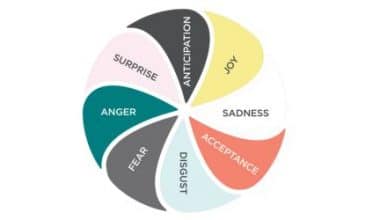Have you ever been moved by a brand’s story, felt an emotional connection, or trusted a company so much that you became a loyal customer? That’s the magic of good PR. Public Relations (PR) is the strategic art of managing a brand’s image and building relationships with the public. It’s not just about generating buzz; it’s about creating meaningful connections and fostering trust. So, what is good PR, and how can it be used to elevate your brand? Let’s dive in!
Key Takeaways
- Good PR is more than just generating positive press; it involves strategically managing a brand’s image, communicating the right message through the right channels, and building relationships with stakeholders to foster trust and maintain a positive reputation.
- Effective PR can increase brand recognition, create a positive brand image, strengthen brand credibility, and attract investors. Public relations excel in building trust between brands and their audiences through third-party endorsements and transparent communication, which are more impactful than traditional advertising.
- Good PR involves clear messaging, strong media relations, effective crisis management, community engagement, and demonstrating social responsibility. Successful PR campaigns often feature compelling stories, strategic targeting, transparency, authenticity, and building long-term relationships with media and influencers.
- Measuring PR success is difficult due to the lack of established techniques. The reliance on third-party endorsers means less direct control over campaign success. The PR industry is dynamic and constantly changing, requiring brands to stay current with trends.
What is Good PR?
Good PR is more than just positive press. It’s about communicating the right message, at the right time, through the right channels, to the right audience. It involves building and maintaining a positive image, managing reputation, and creating strong relationships with stakeholders, including customers, employees, investors, and the media.
A good PR strategy is proactive, not reactive. It involves anticipating public perception, addressing issues before they escalate, and consistently delivering a brand message that resonates with the target audience. From my experience working in PR, I’ve seen firsthand how a well-crafted PR strategy can transform a company’s public image and foster deep connections with its audience.
Benefits of Good PR
The most noteworthy benefit of public relations is its ability to foster transparent and trustworthy relationships with customers. See infographics for the most significant benefits of public relations:
#1. Increased brand recognition
One significant advantage of PR is that it expands your reach, resulting in improved brand awareness among the general public. The goal of public relations is to communicate a brand or company’s innovative product or service to attract media attention.
#2. Positive brand image
After raising awareness, the PR team can start building a positive brand image in the markets that matter the most. One advantage of public relations is the ability to create and sustain a positive brand reputation. This is because image makes a significant contribution to the company’s market.
#3. Positive brand sentiment
Another significant advantage of public relations is that it strengthens brand credibility when others speak positively about your company. In short, people trust PR. A third party’s decision to write about you is far superior to a magazine ad. Public relations excels in building trust between brands and their audiences. Third-party endorsements are quite beneficial.
#4. Attract investors
When seeking funding from investors, a public relations strategy is quite beneficial. With the right media placement and timing, you can show venture capitalists or equity investors what you can offer. Since PR is concerned with creating credibility, it gives investors more reason to believe you’re a lucrative investment opportunity.
What are the Drawbacks of PR?
Knowing the advantages and disadvantages of PR will help you make smart decisions about managing your company’s credibility while determining the best ways to communicate with your target audiences. There are still a few things to consider:
#1. Difficult to measure
Public relations lacks established measurement techniques for determining the success of your efforts. There are systems for measuring PR. People frequently misinterpret that public relations cannot be measured in the same way that marketing or advertising is.
#2. Little control
Public relations relies heavily on third-party endorsers’ willingness to broadcast your content. This implies that you have less direct impact on the success of PR campaigns. You’ll often pitch your story to multiple journalists, with a select few opening your email to read what you have to say.
#3. Turbulent industry
Many of the drawbacks of public relations stem from the fundamental nature of the marketing and communications sector. The landscape is highly dynamic and constantly changing. This makes it tough to stay up with current trends and market changes. As a result, it is crucial to keep up with current events and news.
#4. No guaranteed results
The success of any marketing campaign cannot be guaranteed. If your approach is not well-executed, you risk getting little or no response from your intended audience. Perhaps the strategy wasn’t the issue. The key message is frequently ineffective and fails to reach the intended audience.
The Components of Good PR
Good PR consists of several key components. See infographics below:
Good PR Campaign
So, what makes a good PR campaign? It’s not a one-size-fits-all situation, but some key ingredients can help you cook up a recipe for success:
- A Compelling story: People connect with stories. What’s your brand’s narrative? What are the values you stand for? What problems are you solving? Craft a story that resonates with your target audience and that journalists will want to tell.
- Strategic targeting: Not all media outlets are created equal. Identify the publications and journalists who reach your target audience and tailor your pitches accordingly. Remember, it’s about quality over quantity.
- Transparency and authenticity: In today’s world, audiences crave genuineness. Be transparent about your brand, its successes, and even its challenges. People appreciate honesty and will reward it with trust.
- Building relationships: PR isn’t a transactional activity. It’s about cultivating long-term relationships with journalists and influencers. Be helpful, responsive, and respectful, even when you don’t have a specific request.
What are Good PR Strategies?
Public relations strategies are a set of strategies that an organization uses to help it transition from its present situation to its goal, which can include gaining publicity, expanding its customer base, or improving its reputation. These strategies assist a business in organizing its public relations efforts to attract its target audience and identifying ways to achieve its goals during the planning stage. They are comparable to marketing strategies because the main goal is to raise brand recognition.
Public relations strategies can also be beneficial in crisis management situations since they enable firms to respond to a negative situation and attempt to develop a feasible outcome. A good strategy can help organizations boost their reputation and overcome negative situations. Businesses frequently use outlets such as media sources, blogs, social media, and podcasts to reach a larger audience with these strategies.
Strategies for Good PR
Here are some examples of public relations strategies that companies use to increase their standing in an industry:
#1. Know your audience.
The most successful PR campaigns frequently target a certain audience. Try to create content that has some relevance to your audience. Knowing where to reach your target audience is also a significant consideration. This can happen in person, at events, or online, through social media accounts.
#2. Use research and data
A good way to ensure that your plans have a positive influence on your target audience is to conduct extensive research and data analysis to determine the most effective ways to reach them. You can also use data to examine prior campaigns and identify areas for improvement in your plan. For example, you can examine data showing how much your social media exposure has increased and determine the most successful aspects of your social media strategy.
#3. Embrace the internet
Being active online is one of the most frequent ways for brands to engage with their target audience, and many public relations professionals rely heavily on social media for this purpose. On these platforms, followers can read and share summary information. The internet also allows companies to reach out to consumers and resolve crises in real-time.
#4. Create intriguing content.
When targeting a certain audience, it is vital to create content that is tailored to their needs and elicits a response from them. Learning about your audience’s wants, needs, sentiments, and values can help you create content that appeals to them and aligns with their ideals. Whether it’s presenting a story they can relate to or offering a unique solution to their problem, making sure your content is unique and tailored to your audience can help you build a solid relationship.
#5. Use local media
Most businesses understand which major and national media channels can help them get the most exposure, making it more difficult to gain an advantage through them. However, augmenting your media presence with regional or local sources for your target audience to follow and trust can help you earn their trust and reach new segments of the market. If your message is compelling enough, national media might notice it and spread it, too.
Good PR Examples
The best PR campaigns are those in which creativity has no limitations. Best of all, any brand can benefit from a little public relations, whether it’s a local campaign or a nationwide one. Let’s take a look at the brands that have mastered the art of PR.
#1. Coca-Cola “Create Real Magic”
When 2023 rolled along, AI seemed to be on everyone’s mind. ChatGPT and AI art generator Dall-E have shed new light on content creation, inspiring one of the most prominent companies to leverage the publicity of these new tools.
The result was the “Create Real Magic” campaign, which urged people to design their own AI artwork for the company. Using popular tools like Dall-E, fans could add their own spin to how they envision the brand — regardless of design skills.
#2. Dove’s: Real Beauty Campaign
“When it comes to building favorable brand associations, Dove stands out. For example, its #TheSelfieTalk campaign examines the pressure young girls face to be “perfect” — and the extent they go to achieve this online.
It is one of Dove’s many campaigns exploring how the beauty business affects women’s self-esteem and body image. As a result, the brand is frequently connected with happiness, self-esteem, and confidence.”
#3. Ikea: #StayHome.
“During lockdowns, Ikea wanted customers to perceive their homes from a different perspective. Enter the #StayHome campaign, a love letter to our homes and the life moments that take place there. It shifts our idea of home from a place of isolation to one of warmth, shelter, and growth. It’s a message of hope that has a lasting impact on the audience.
#4. “Lego: Rebuild the World”
“According to Lego, rebuilding the world starts with a single (lego) brick. It’s a powerful message for individuals rebuilding their lives after a difficult few years, delivered by a firm that believes in creating, experimenting, and breaking the rules. This campaign is not only well-timed, but it effectively presents its products in such a way that goes beyond their basic functionality.
#5. Nike’s: “Dream Crazy” Campaign
Nike’s “Dream Crazy” campaign, featuring Colin Kaepernick, is another powerful example of good PR. The campaign, launched in 2018, highlighted athletes who overcame obstacles to achieve greatness. By taking a bold stand on social justice issues, Nike connected with its audience on a deeper level. Despite initial controversy, the campaign generated $43 million worth of media exposure within 24 hours and significantly boosted Nike’s sales.
#6. Airbnb’s: “We Accept” Campaign
Airbnb launched the “We Accept” campaign in response to the 2017 travel ban, showcasing its commitment to diversity and inclusion. The campaign included a Super Bowl ad and a pledge to provide short-term housing for those in need. Airbnb’s bold stance on a controversial issue resonated with many and reinforced the brand’s values. The campaign received widespread media coverage and positive public reaction.
Companies with Good PR
Several companies consistently excel in their PR efforts, building strong reputations and loyal customer bases. Let’s look at a few examples.
#1. Apple
Apple is renowned for its PR prowess. The company’s product launches are highly anticipated events, generating massive media coverage and consumer excitement. Apple’s secretive and exclusive approach to PR creates a sense of mystery and anticipation. The company also excels in crisis management, addressing issues transparently and maintaining public trust. From my experience working in PR, I’ve seen how Apple’s approach to product launches can create buzz and excitement. By carefully controlling information and timing, Apple ensures that each launch is a major event.
#2. Starbucks
Starbucks is another company with a strong PR strategy. The brand engages with its community through various initiatives, such as promoting ethical sourcing and environmental sustainability. Starbucks also excels in social media engagement, using platforms like Twitter and Instagram to connect with customers and address their concerns promptly.
#3. Tesla
Tesla’s PR strategy is unique, largely driven by its charismatic CEO, Elon Musk. Tesla generates extensive media coverage through innovative products, bold announcements, and Musk’s active social media presence. The company’s commitment to sustainability and cutting-edge technology also resonates with its audience, reinforcing Tesla’s image as a forward-thinking brand.
What Makes a Good PR Campaign Stand Out?
Here are some additional elements that can elevate your PR game:
- Data-driven approach: Don’t just throw spaghetti at the wall and hope it sticks. Use data and analytics to track your PR efforts and measure their effectiveness. This way, you can refine your strategy and optimize your results.
- Embrace new media: The media landscape is constantly evolving. Don’t neglect the power of social media, influencer marketing, and other new-age communication channels.
- Crisis communication plan: Let’s face it, things don’t always go according to plan. Having a crisis communication plan in place can help you mitigate the damage and protect your reputation in the event of a negative event.
Boost your Marketing Campaign Success and Download our Free ‘Press Release Template’ Now!
How much PR is good?
When it comes to public relations (PR), the question of “how much is enough?” can be tricky. The right amount of PR depends on various factors including your brand, industry, target audience, and goals. However, some general guidelines can help you determine an effective PR strategy. An easy way to determine a PR budget is to take 1–2% of revenue or 10–20% of the profit.
Conclusion
Good PR is an investment in your brand’s future. It’s about building trust, increasing brand awareness, and fostering deeper connections with your audience. By implementing the strategies outlined above, you can create a PR roadmap that positions your company for long-term success.
Remember, good PR takes time and consistent effort to build a strong reputation. But the rewards are well worth it. So, the question I leave you with is this: What story will your brand tell? How will you leverage the power of good PR to connect with your audience and build a legacy of trust?
Related Articles
- The Ultimate Guide To Creating a Comprehensive PR Report In 2024 (With Free Templates)
- Best Ways to Prevent and Respond to Confidential Information Leakage
- The Only 6 PR Industry Trends That Actually Matter in 2024
- 10 Communication Best Practices You Should Know to Improve Employee Engagement
- Everything You Need To Know About PR Packages In 2024






